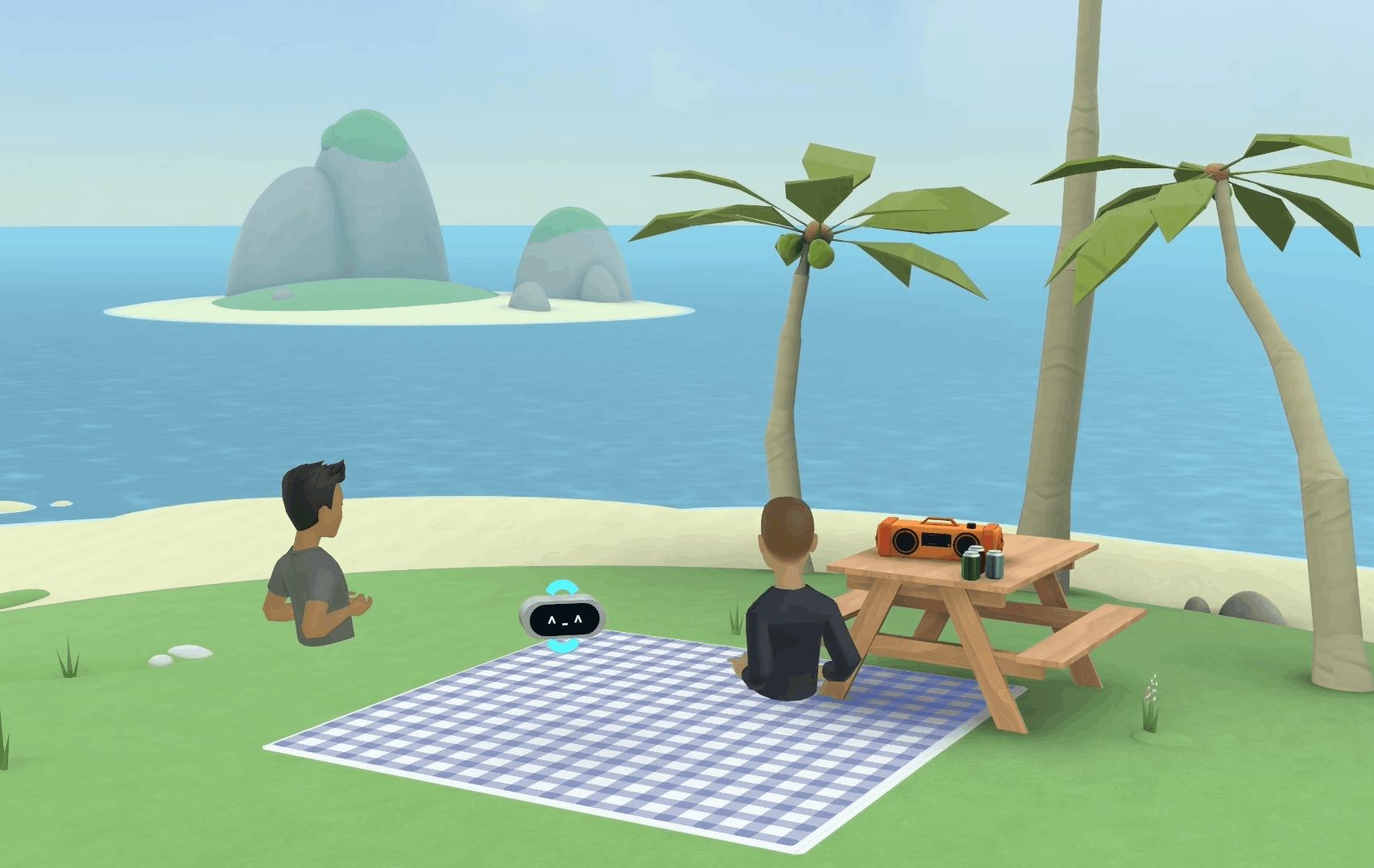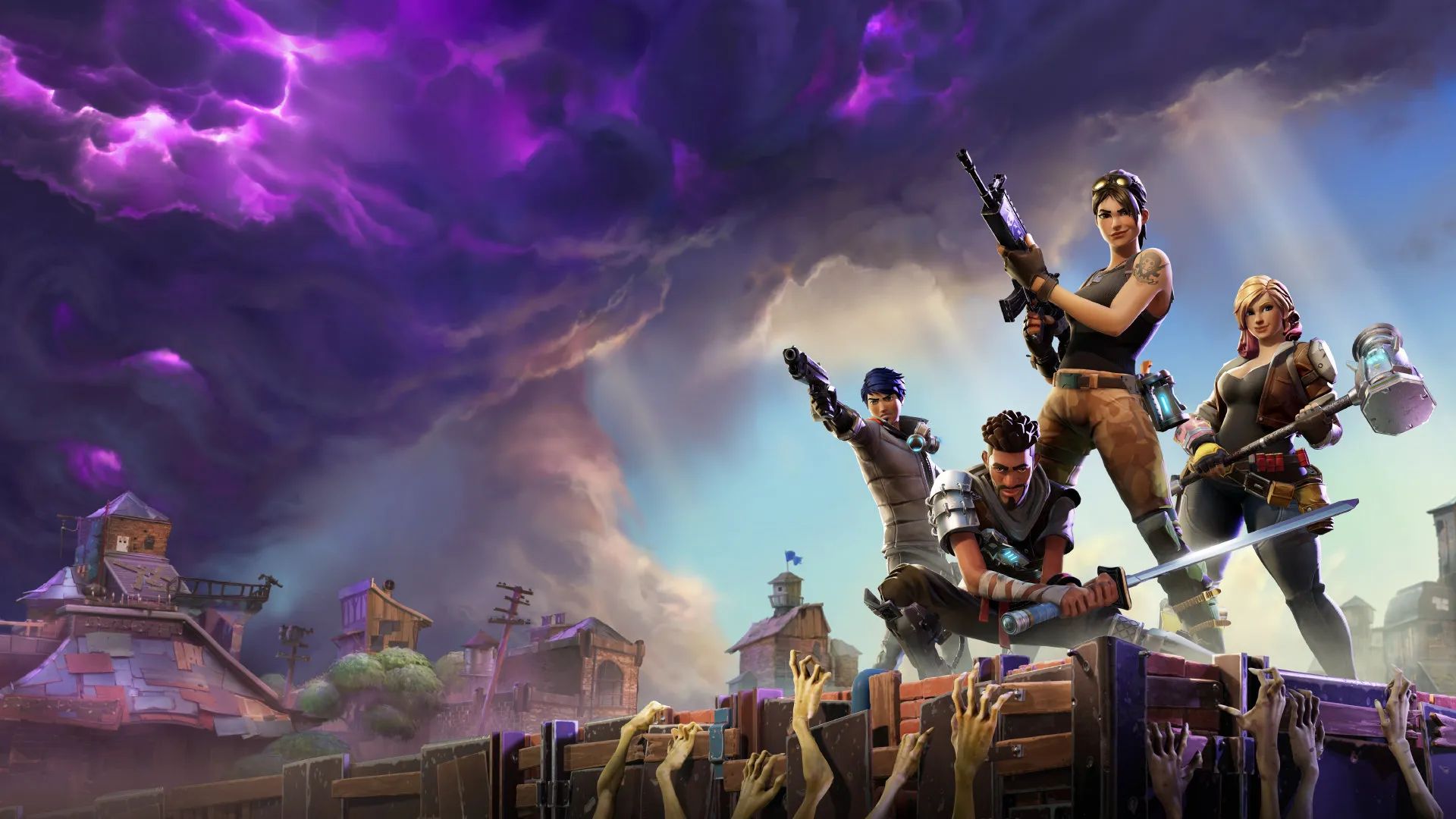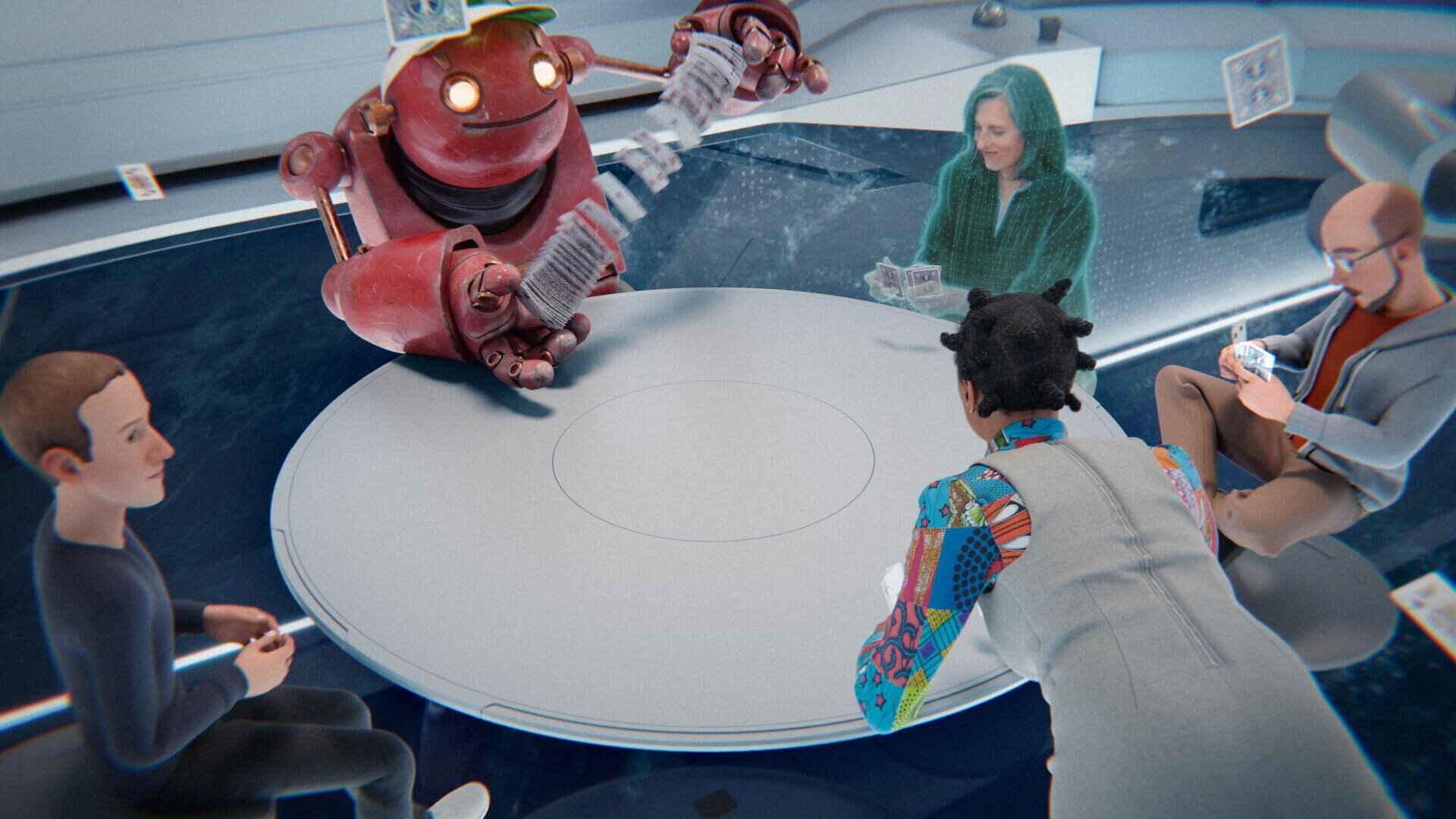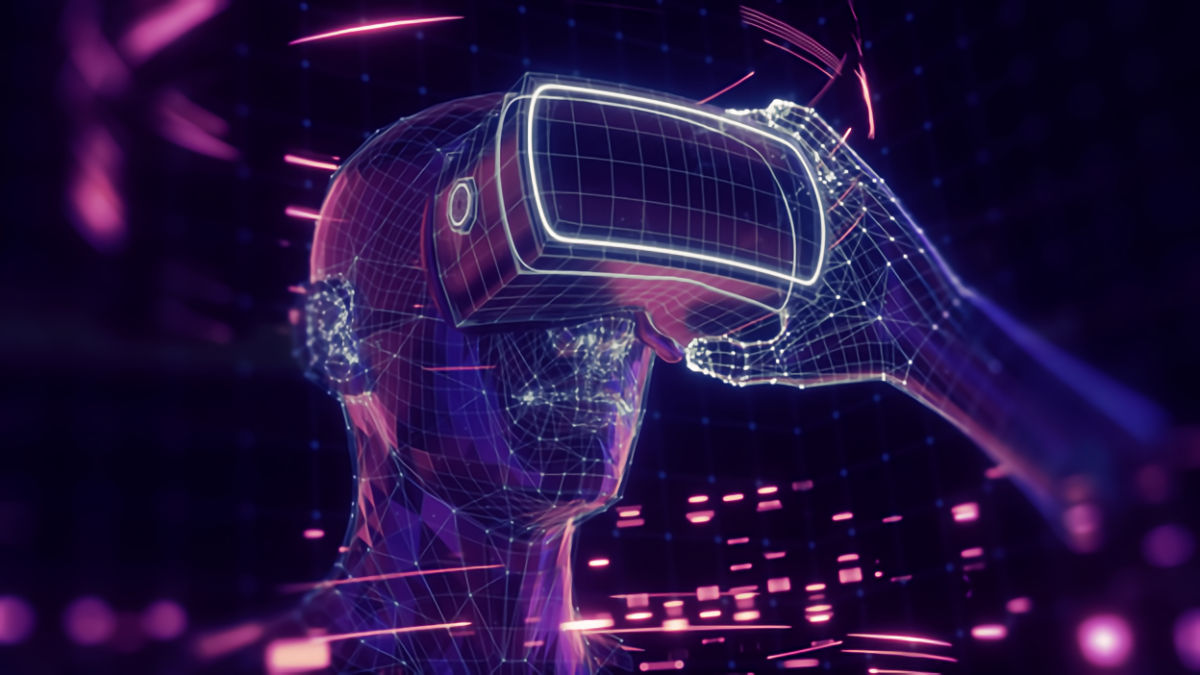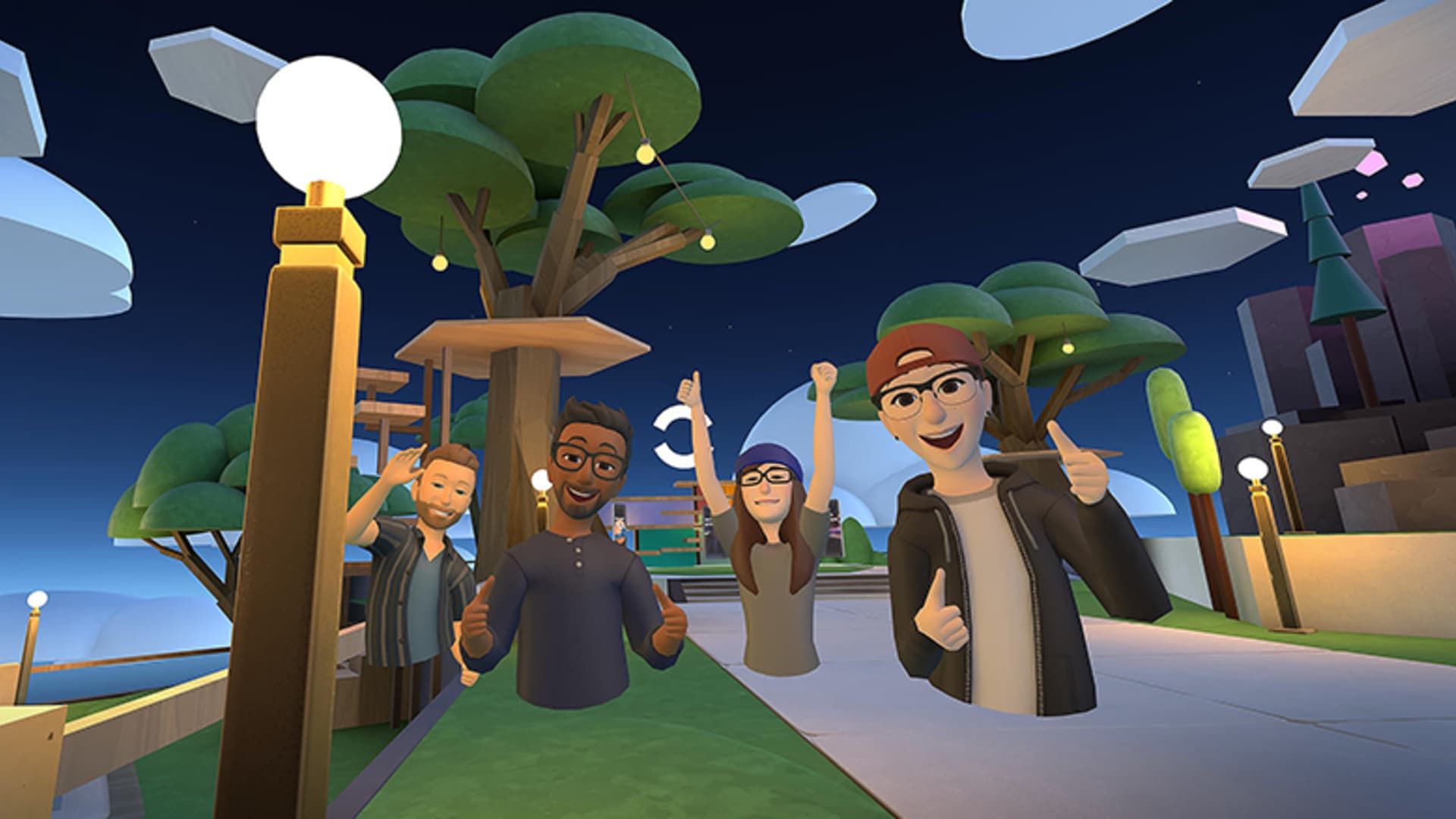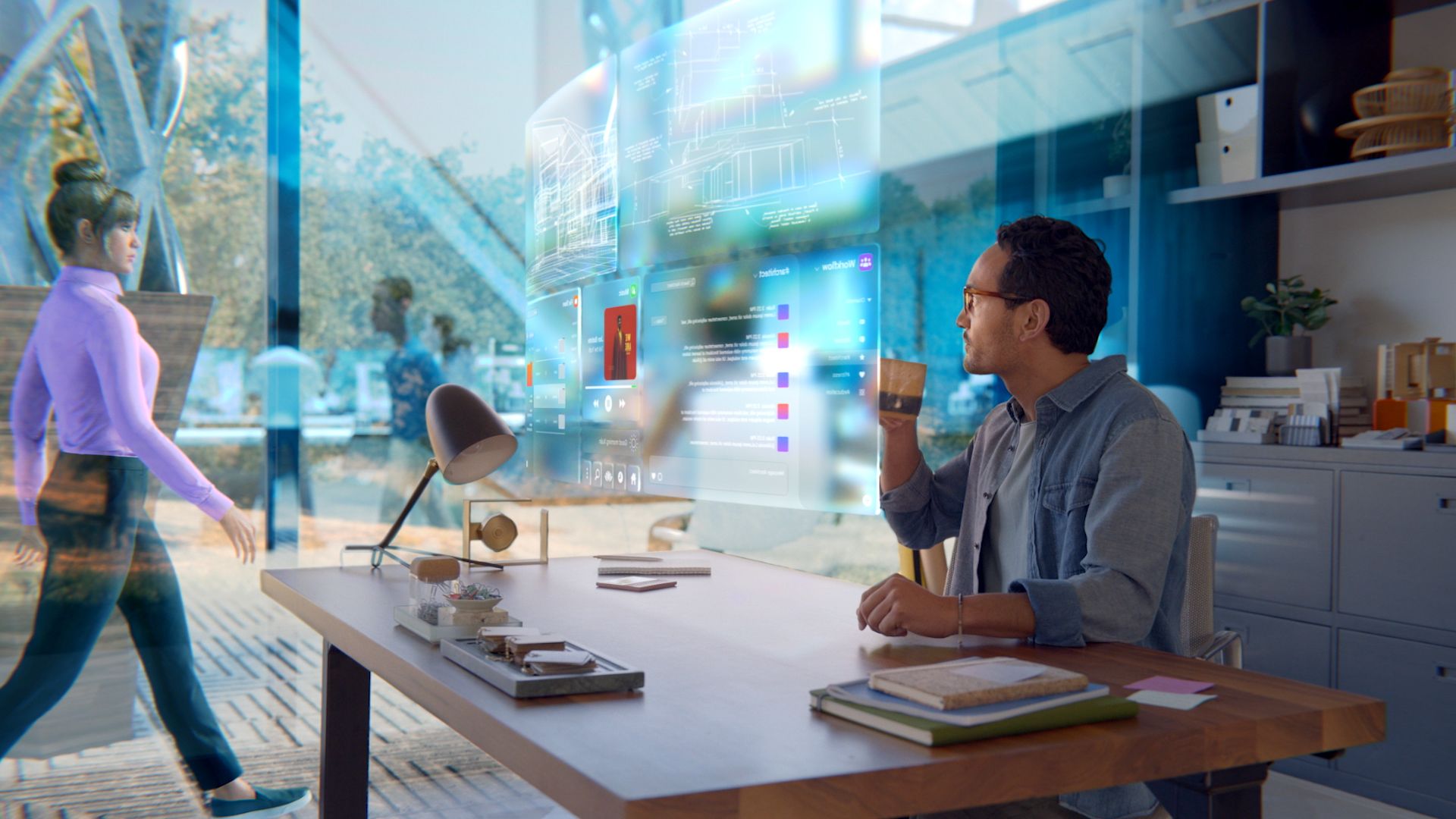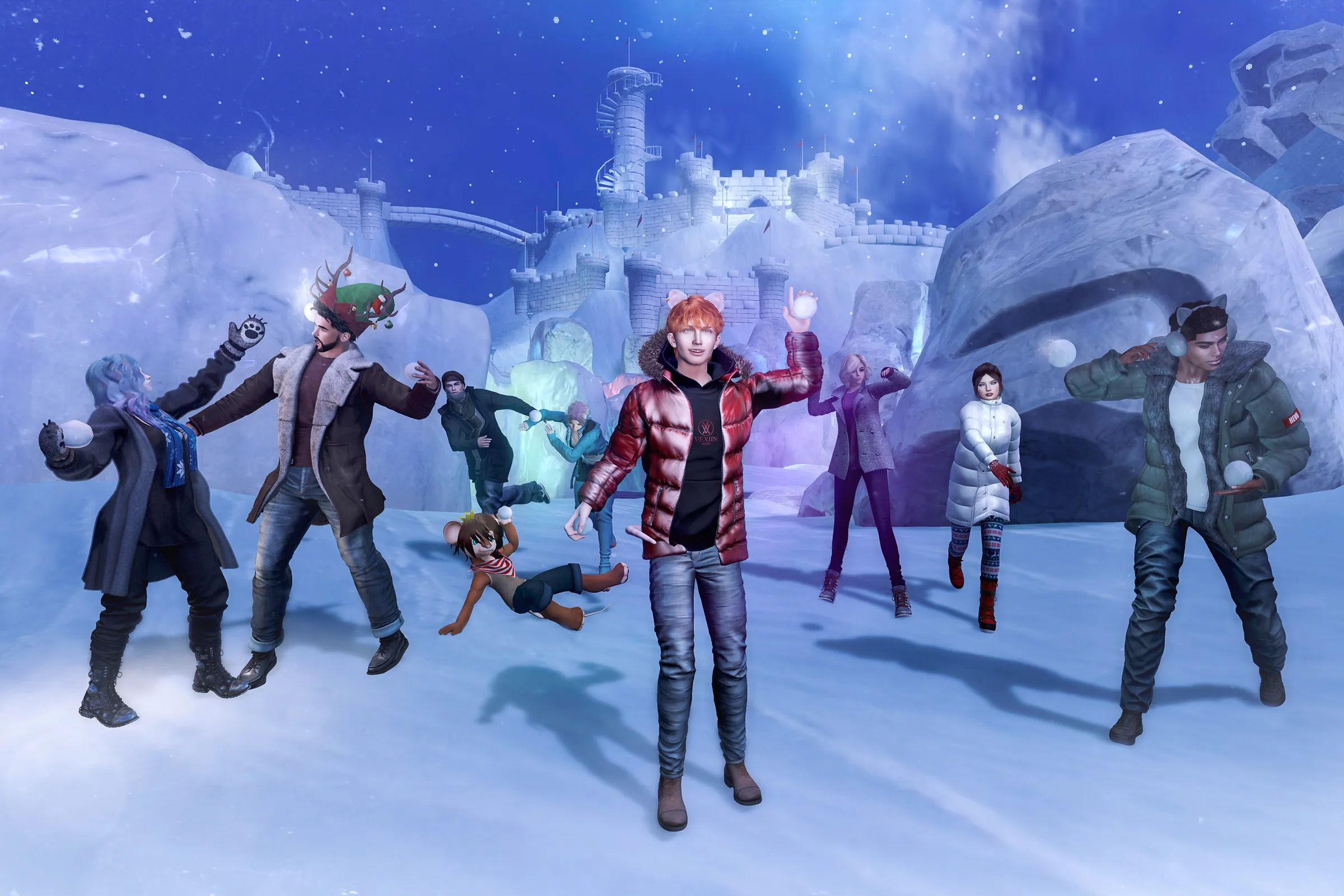Introduction
Welcome to the fascinating realm of the metaverse, where limitless possibilities and immersive experiences await. In this digital landscape, users can explore virtual worlds, connect with others, and partake in endless adventures. As technology continues to advance, the concept of the metaverse has gained significant momentum, captivating the minds of people all around the globe.
But what exactly is the metaverse? In simple terms, it is a collective virtual shared space that incorporates a myriad of interconnected digital environments. It goes beyond the boundaries of traditional online platforms, offering a seamless blend of augmented reality (AR), virtual reality (VR), and various other emerging technologies.
The metaverse encompasses a vast array of platforms, including online gaming, social media, virtual reality experiences, and much more. With its immersive nature, the metaverse has the potential to redefine how we work, communicate, and entertain ourselves.
Creating your own world within the metaverse can be an exhilarating endeavor. Whether you have a vision for a virtual gaming realm, a social hub, or a futuristic city, bringing your imagination to life in the metaverse requires careful planning and execution.
In this guide, we will walk you through the step-by-step process of creating your very own world in the metaverse. From conceptualization to publication, we’ll cover everything you need to know to turn your vision into a captivating and interactive digital reality.
So, if you’re ready to dive into the metaverse and unlock endless possibilities, let’s get started on this thrilling journey of world creation.
What is the Metaverse?
The concept of the metaverse has been widely popularized in recent years, but what exactly does it mean? The metaverse is a virtual reality space that encompasses a collection of interconnected digital worlds, allowing users to explore, interact, and engage with a variety of experiences.
Unlike traditional online platforms, the metaverse offers a seamless integration of virtual reality, augmented reality, and various emerging technologies. It goes beyond the limitations of a single game or application, providing a vast and immersive digital landscape for users to traverse.
At its core, the metaverse is driven by a shared and collaborative environment. It allows users to connect with others, socialize, and engage in real-time interactions. Imagine attending virtual concerts, exploring fantastical worlds, and participating in exciting adventures, all while interacting with friends and strangers from around the world.
One of the key aspects of the metaverse is its persistent nature. Unlike traditional video games or applications that have defined sessions, the metaverse is always accessible and constantly evolving. Worlds, objects, and experiences within the metaverse persist even when users log off, creating a sense of continuity and immersion.
Currently, various platforms and companies are working towards building the metaverse. This includes virtual reality platforms like Oculus, social media platforms like Facebook’s Horizon, gaming platforms like Roblox, and even blockchain-based platforms like Decentraland. These platforms serve as hubs for users to create, explore, and share their own digital worlds within the metaverse.
Ultimately, the metaverse holds tremendous potential for various industries, including gaming, entertainment, education, and even commerce. It opens up new avenues for creativity, social interaction, and the monetization of digital assets. As technology continues to advance, the metaverse is poised to become an integral part of our digital lives.
In the following sections, we will guide you through the process of creating your own world within the metaverse, from conceptualization to publication. So, strap on your virtual reality headset, and let’s dive into the fascinating world of metaverse creation.
Step 1: Conceptualize your world
Before diving into the technical aspects of creating your world in the metaverse, it’s important to take the time to conceptualize and plan your vision. This step sets the foundation for the entire creative process and ensures that your world aligns with your goals and objectives.
Start by brainstorming ideas and considering the purpose of your world. Are you creating a virtual gaming realm, a social space, or a simulation of a real-world location? Define the theme, ambiance, and overall atmosphere you want to evoke. This could be anything from a medieval fantasy world to a futuristic sci-fi realm.
Next, think about the target audience for your world. Are you creating an experience for gamers, art enthusiasts, or educational purposes? Understanding your target audience will help you tailor your world to their interests and preferences.
Consider the narrative or storyline that will drive your world. Will there be quests, challenges, or interactions that users can engage in? Crafting a compelling narrative will not only immerse users but also provide a sense of purpose and progression within your world.
As you conceptualize, it’s essential to take into account the limitations and capabilities of the platform you are using to create your world. Different platforms may have varying restrictions on graphics, interactivity, and performance. Understanding these limitations will help you design and optimize your world effectively.
Lastly, create a storyboard or sketch out your world’s layout and key elements. Visualize how users will navigate through your world and interact with different objects and features. This will serve as a blueprint for the design and development stages.
By thoroughly conceptualizing your world, you lay the groundwork for a cohesive and engaging metaverse experience. Take the time to refine your ideas and ensure that they align with your goals and vision. With a solid concept in place, you’re ready to move on to the next step: defining the rules and physics of your world.
Step 2: Define the rules and physics
Once you have a clear concept for your metaverse world, the next step is to define the rules and physics that will govern the interactions within your virtual environment. This step is crucial in ensuring that your world feels immersive, realistic, and consistent.
Start by considering the laws of physics that will apply in your world. How will gravity, friction, and other physical forces behave? Are there any unique aspects or mechanics that you want to introduce? By defining these parameters, you create a sense of realism and believability.
Next, think about the rules and limitations within your world. Are there specific actions that users can or cannot perform? Are there consequences for certain behaviors? By establishing clear rules, you ensure that users have a structured experience and understand the boundaries of your world.
Consider the interactivity and user agency within your world. Will users have the ability to modify the environment, create objects, or interact with NPCs (non-playable characters)? Define what actions users can take and how they will impact the world around them.
Furthermore, consider the progression and skill systems in your world. Will users be able to level up, acquire new abilities, or unlock achievements? Implementing a progression system can provide users with a sense of achievement and incentivize continued engagement.
Collaborate with developers and designers to ensure that the rules and physics align with the technical capabilities of the platform you are using. Consider any limitations or constraints that may impact the implementation of certain mechanics.
Lastly, document these rules and physics in a comprehensive guide or documentation. This will serve as a reference for both you and any collaborators working on your metaverse world. Regularly review and refine these rules as you iterate and improve your world.
By defining the rules and physics of your world, you establish a framework that governs user interactions and creates a cohesive virtual experience. With these guidelines in place, you’re ready to move on to the next step: creating a map or layout for your world.
Step 3: Create a map or layout
As you progress in creating your metaverse world, it’s essential to create a map or layout that serves as the blueprint for your virtual environment. The map or layout provides a visual representation of the spatial organization and helps users navigate through your world.
Start by envisioning the overall structure and layout of your world. Consider the different areas or zones you want to include, such as cities, forests, dungeons, or social hubs. Sketch out the general arrangement or flow of these areas to create a cohesive and immersive experience.
Think about the scale and proportions of your world. Determine the size and dimensions of each area, ensuring that they are appropriate for the intended purpose and user experience. Consider the level of detail and intricacy you want to achieve in each section.
When creating the map or layout, pay attention to the connectivity and pathways within your world. Design paths for users to follow, whether it’s for exploration, quests, or social interactions. Ensure that the routes are intuitive, visually appealing, and provide a sense of progression.
If your world requires navigation through multiple layers or levels, consider implementing a system of portals, elevators, or teleportation devices to facilitate movement between different areas.
Collaborate with designers and artists to visualize your map or layout. Leverage software tools or even create physical sketches to bring your vision to life. This collaborative effort ensures that the map aligns with the overall style and theme of your world.
Regularly review and iterate on your map or layout as you refine your world. Seek feedback from others and consider how user flow and usability can be improved. Continuously evolving and optimizing the map helps create a more engaging and enjoyable experience for users.
By creating a map or layout, you provide a visual guide for the spatial organization of your metaverse world. This step lays the foundation for the design and development stages, as you proceed to the next step: designing the environment.
Step 4: Design the environment
Designing the environment is a crucial step in creating a captivating metaverse world. The environment sets the mood, atmosphere, and visual appeal of your virtual space. It brings your world to life and immerses users in a rich and engaging experience.
Start by considering the visual style and theme of your world. Determine the color palettes, architectural styles, and overall aesthetic that align with your concept. Whether it’s a lush fantasy forest, a futuristic cityscape, or an otherworldly realm, ensure that the environment reflects the narrative and purpose of your world.
Create visually striking and detailed landscapes that capture the imagination of your users. Utilize textures, lighting, and effects to enhance the realism and visual appeal of your world. Pay attention to small details and subtle nuances that can make a significant impact on the overall ambiance.
Consider the use of sound design to enhance the environment. Incorporate ambient sounds, background music, and interactive audio cues to create an immersive auditory experience. Sound can evoke emotions and deepen the sense of presence within your world.
Collaborate with designers and artists to create 3D models, textures, and assets that populate your environment. Ensure that these assets align with the visual style and theme of your world. Pay attention to the level of detail and optimize the performance of these assets to ensure a smooth experience for users.
Experiment with different lighting techniques to create dynamic and visually interesting scenes. Utilize shadows, reflections, and global illumination to add depth and realism to your environment. However, be mindful of the performance impact and ensure that your world remains accessible to users with varying hardware capabilities.
Iterate and refine your environment design based on feedback and user testing. Seek input from others to identify areas for improvement and make adjustments as necessary. Strive for a balance between visual appeal, performance, and user experience.
Remember that the environment of your metaverse is not static. It can evolve, change, and grow over time. Continuously update and expand your environment to keep users engaged and excited.
By designing an immersive and visually stunning environment, you enhance the overall experience of your metaverse world. With the environment in place, it’s time to move on to the next step: populating your world with assets and objects.
Step 5: Populate your world with assets and objects
Now that you have designed the environment for your metaverse world, it’s time to bring it to life by populating it with assets and objects. These elements contribute to the interactivity and engagement within your virtual space, allowing users to interact with the world around them.
Start by creating or acquiring assets that align with the theme and purpose of your world. These assets can include 3D models, textures, animations, and audio files. Ensure that the quality and style of the assets are consistent with the overall design and aesthetic of your world.
Consider the functionality and interactivity of the objects you introduce. Will users be able to interact with them, pick them up, or use them in some way? Define the properties and behaviors of objects to create a dynamic and engaging experience. For example, in a game world, objects could be weapons, tools, or collectibles with unique properties.
Think about the placement and arrangement of assets within your world. Consider the spatial organization, storytelling opportunities, and gameplay flow. Arrange objects strategically to guide users’ attention and create meaningful interactions.
Collaborate with designers and developers to integrate these assets into the environment seamlessly. Ensure that they are properly positioned, scaled, and optimized for performance. Test and iterate on the placement to achieve a balanced and visually appealing composition.
Investigate opportunities to introduce non-playable characters (NPCs) into your world. NPCs can provide quests, offer information, or engage in meaningful interactions with users. Craft engaging dialogue and behavior for NPCs to create a more immersive and dynamic experience.
Consider the accessibility and inclusivity of your world when populating it with assets and objects. Ensure that users of different abilities and backgrounds can interact with and enjoy your world. Provide alternative options or accommodations if necessary.
Regularly update and expand the content within your world to keep users engaged and excited. Introduce new assets and objects, respond to user feedback, and add additional layers of interactivity as you iterate and improve your metaverse world.
By populating your world with assets and objects, you enhance the interactivity and immersion within your metaverse space. With the environment populated, it’s time to move on to the next step: adding interactive elements and features.
Step 6: Add interactive elements and features
Adding interactive elements and features is a crucial step in creating a dynamic and engaging metaverse world. These elements provide users with opportunities to actively participate and contribute to the immersive experience.
Start by identifying the types of interactions you want to incorporate in your world. Consider whether you want users to engage in gaming mechanics, social interactions, or educational activities. Determine the core interactive elements and features that align with the goals and purpose of your world.
Implement gameplay mechanics that provide challenges and rewards. This could include puzzles, quests, or competitive activities. Design these mechanics to be engaging, balanced, and aligned with the skill level and interests of your target audience.
Introduce social features that allow users to connect and interact with others. This could involve chat systems, multiplayer functionality, or virtual meeting spaces. Foster a sense of community and encourage collaboration and communication among users.
Consider incorporating dynamic events or scenarios into your world. These can be scheduled or triggered events that add excitement and variety to the user’s experience. Events can include virtual concerts, in-world celebrations, or time-limited challenges.
Experiment with augmented reality (AR) or virtual reality (VR) to add an extra layer of immersion and interaction to your metaverse world. Incorporate motion controllers or VR headsets to enable users to physically interact with objects or environments.
Ensure that the interactive elements and features are intuitive and easy to understand. Provide clear instructions or tutorials to guide users through any new mechanics or activities. Strive for a balance between simplicity and complexity to cater to a wide range of users.
Regularly test and gather user feedback to refine and improve the interactive elements and features. Listen to user suggestions and observe how users engage with the interactive aspects of your world. Iterate on these elements to enhance the user experience and address any pain points.
Remember to consider accessibility when designing interactive elements and features. Ensure that users with different abilities or limitations can still participate and enjoy your world. Provide alternative options or accommodations if necessary.
By adding interactive elements and features, you create a more engaging and immersive experience within your metaverse world. These elements keep users actively involved and encourage continued exploration and interaction. As you move forward, the next step is to test and refine your world.
Step 7: Test and refine your world
Testing and refining your metaverse world is a crucial step in ensuring its quality, performance, and user satisfaction. This step allows you to identify and resolve any issues, bugs, or areas for improvement, creating a polished and seamless experience for users.
Start by conducting thorough testing of your world across different platforms, devices, and user scenarios. Test for functionality, usability, performance, and compatibility. Identify any technical glitches, navigation challenges, or other issues that may impact the user experience.
Encourage users to provide feedback and collect data on their interactions with your world. Consider implementing feedback forms, surveys, or even user testing sessions to gather valuable insights and perspectives. This input will help you identify pain points, discover usability issues, and gain a better understanding of user expectations.
Regularly iterate and improve your world based on user feedback and testing results. Address identified issues, refine gameplay mechanics, optimize performance, and enhance the overall user experience. Ensure that updates and improvements are communicated to users, fostering transparency and engagement.
Collaborate with a team of beta testers or early adopters to gain valuable insights from different perspectives. Engage with this community to gather continuous feedback, identify potential areas for improvement, and leverage their expertise to enhance your metaverse world.
Consider the scalability and performance of your world as the user base grows. Optimize your code, assets, and server infrastructure to handle increased traffic and ensure a smooth and enjoyable experience for all users. Regularly monitor performance metrics and make necessary adjustments to maintain optimal performance.
As you test and refine your world, keep in mind the importance of user satisfaction and engagement. Take into account the interests, preferences, and feedback of your user community. Continuously evolve and enhance your metaverse world based on their needs and desires.
Lastly, don’t forget to document your testing processes, findings, and improvements. This serves as a reference for future updates and provides a valuable resource for your development team.
By thoroughly testing and refining your world, you enhance its quality, usability, and overall user experience. As you near the completion of this process, it’s time to prepare for the final step: publishing and sharing your metaverse world.
Step 8: Publish and share your world
Congratulations! After all the hard work and dedication you put into creating your metaverse world, it’s time to share it with the world. Publishing and sharing your world allows others to explore, interact, and experience the virtual realm you’ve created.
Start by deciding which platform or platforms you want to publish your metaverse world on. Research and evaluate different platforms that align with your goals, target audience, and technical requirements. Opt for platforms that offer a wide user base, robust features, and a supportive community.
Prepare your world for publication by ensuring it meets the platform’s guidelines, requirements, and quality standards. Test your world thoroughly to catch any remaining issues or bugs before you make it available to the public. Optimize your assets, code, and performance to ensure a smooth experience for users.
Create engaging and captivating promotional materials for your metaverse world. This includes screenshots, videos, blog posts, or social media content that showcases the unique features, aesthetics, and experiences your world offers. Utilize compelling storytelling and visuals to attract potential users and spark their curiosity.
Collaborate with relevant influencers, content creators, or communities to promote your metaverse world. Seek partnerships or sponsorships with individuals who have an existing audience that aligns with your target demographic. Leverage their reach and influence to generate buzz and attract users to your world.
Engage with your audience and community by actively responding to feedback, addressing questions, and providing support. Encourage users to share their experiences, create content around your world, and spread the word to their own networks. Foster a passionate and inclusive community around your metaverse world.
Regularly update and improve your world based on user feedback, emerging technologies, and industry trends. Show your commitment to your users by continuously delivering new content, features, and experiences. By doing so, you keep the excitement and engagement levels high.
Consider monetization options for your metaverse world, such as in-app purchases, subscriptions, or partnerships with brands. If applicable, implement a fair and transparent monetization model that provides value to both you and your users. Ensure that any monetization strategies are aligned with the nature and purpose of your world.
As you publish and share your metaverse world, keep in mind that building and maintaining a successful virtual community takes time and effort. Be patient, proactive, and responsive in cultivating a thriving user base and community.
By publishing and sharing your metaverse world, you open the door for others to explore and experience the unique virtual reality you’ve created. Embrace the feedback and engagement of your users, and continue to evolve and enhance your world based on their needs and desires.
Conclusion
Congratulations on completing the journey of creating your own world in the metaverse! From conceptualization to publication, you’ve dedicated time, creativity, and technical expertise to craft a captivating virtual experience. Through the steps outlined in this guide, you’ve learned how to bring your vision to life, create immersive environments, and engage users with interactive elements.
The metaverse offers endless opportunities for creativity, social connection, and immersive experiences. As technology continues to advance, the metaverse is set to become an integral part of our digital lives, transforming industries and redefining how we interact with virtual spaces.
Remember that the creation of a metaverse world is an ongoing process. As you publish and share your world, continue to listen to user feedback, iterate on your design, and introduce new features and content. Foster a vibrant community around your world, and embrace the synergistic relationship between your users and your creation.
Whether you’ve created a virtual gaming realm, a social hub, or a futuristic metropolis, your metaverse world offers a unique and immersive experience for users. So, keep pushing boundaries, exploring new technologies, and imagining new possibilities within the metaverse.
The future of the metaverse is bright, and your contribution to this evolving digital landscape is invaluable. So, step forward confidently, share your world with the masses, and embark on a journey filled with boundless exploration, connection, and limitless creativity.







